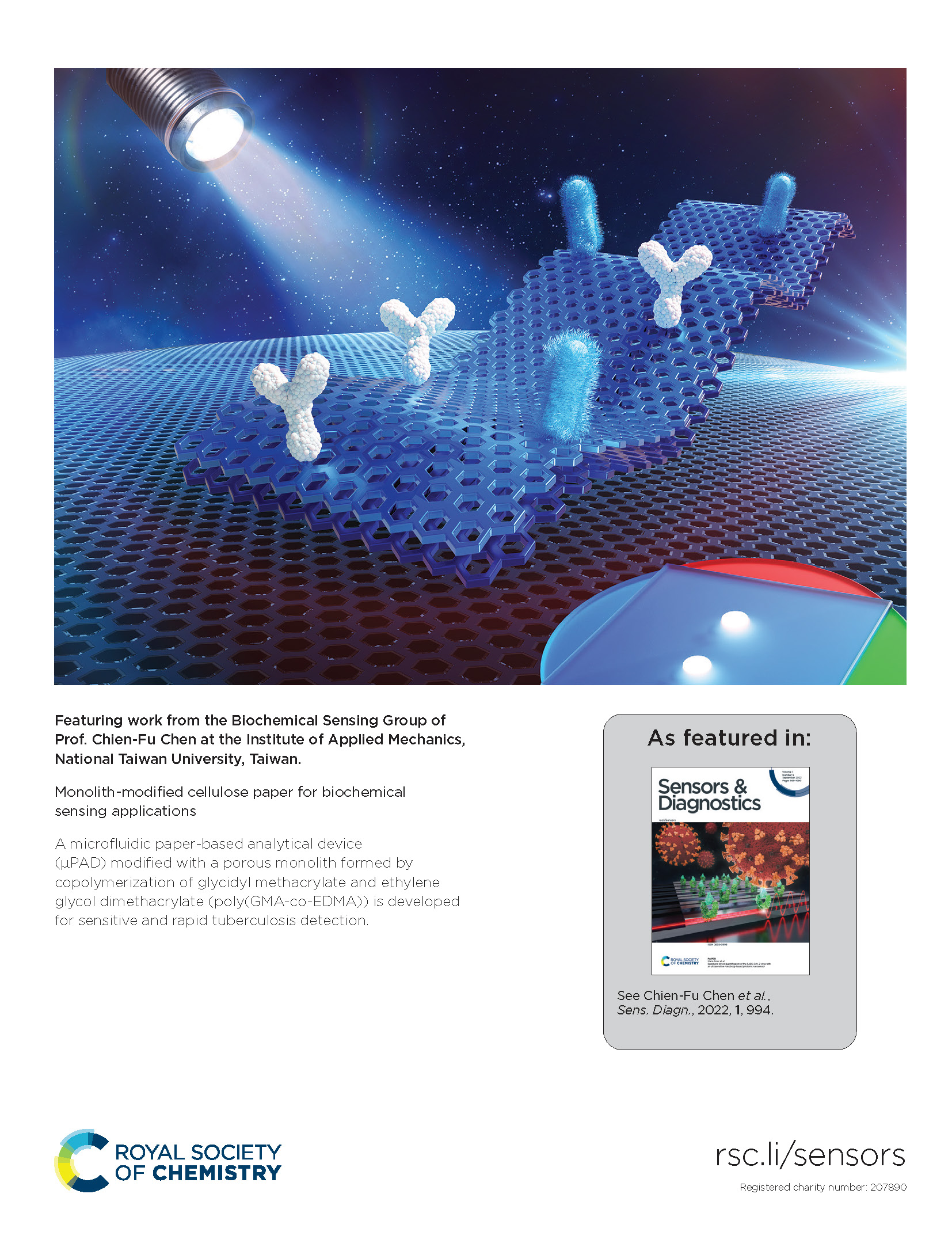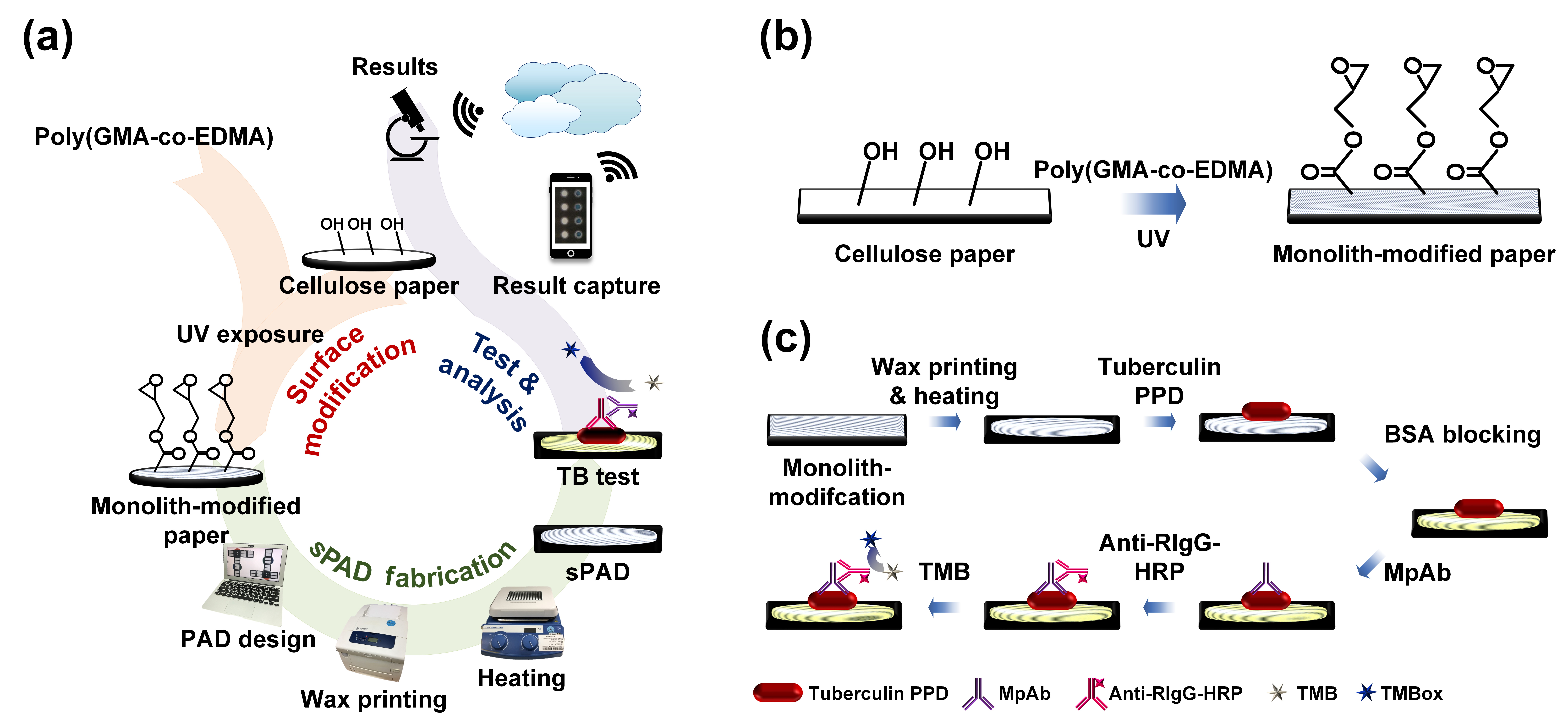Tuberculosis (TB), a fatal infectious disease, led to 1.5 million deaths in 2020 according to the Global Tuberculosis Report 2021 by the World Health Organization (WHO). To prevent the spread of TB, detection of its etiopathogenic agent is crucial for early diagnosis and treatment. Typically, a sputum sample from a suspected patient is cultured for 6 to 8 weeks to determine whether M. tuberculosis is present in the collected sample. Although the method is effective for correct diagnostics, the efficiency is considered to be low. To speed up the process, the WHO recommended nucleic acid amplification tests (NAATs) that are capable of completing the detection within a day for high-sensitivity TB diagnosis. However, the cost of the instrument and operational requirements, such as power sources and trained professionals, limit its applicability in resource-limited regions. Thus, point-of-care (POC) devices that are sensitive, rapid in detection, and affordable have been developed for TB detection.

Microfluidic paper-based analytical devices (µPADs) are a typical type of POC device. Because they use a cellulose-based paper substrate, µPADs have certain benefits, including being inexpensive, disposable, and biocompatible, which makes µPADs suitable for on-site detection. Typically, biomolecules such as proteins and antibodies are first added onto the cellulose paper surface and then trapped onto the surface by the porous structure of the cellulose paper. The trapped biomolecules, therefore, act as biosensors and target biomarkers in disease diagnosis. However, the trapping is not strong enough, and detachment of the biomolecules can occur after multiple reactions and washing steps. To fully immobilize biomolecules on the paper surface, surface modification is required since a modified layer could enhance the overall surface area for biomolecular trapping and reduce the movement of molecules in assays.
In this work, we combine a monolith and µPAD to form a novel surface-modified microfluidic-based analytical device (sPAD) with better biomolecular immobilization efficiency and stability for TB detection. Monoliths are a type of porous material that are commonly applied in catalytic reactions, adsorption processes, gas or liquid chromatography, electrophoresis, and other phase separation processes. The poly(GMA-co-EDMA) monolith was first synthesized in situ through photopolymerization at room temperature. To understand the changes in the properties of the paper surface, the contact angle and morphology were measured before and after photopolymerization. Then, we optimized the enzyme reaction time by testing human immunoglobulin G (HIgG) on our device to determine the optimized biomolecular immobilization time. Finally, we performed TB detection on the sPAD by spiking the test samples with different concentrations of tuberculin purified protein derivative (PPD). The results showed that our device could successfully detect the presence of tuberculin PPD and had a low limit of detection (LOD).

Schematic illustration of the sPAD. (a) Overall tuberculosis is detection procedure. (b) Monolith surface modification mechanism. (c) Steps for detection pad fabrication and tuberculosis detection.
This work has been published and featured on the Back Cover on Sensors & Diagnostics. The team would like to acknowledge and appreciate the financial support from the National Science and Technology Council (NSTC) and the Higher Education Sprout Program at National Taiwan University, Taiwan.
Contact: Prof. Chien-Fu Chen
This email address is being protected from spambots. You need JavaScript enabled to view it.
More information:
“Monolith-modified cellulose paper for biochemical sensing applications”, Sensors & Diagnostics, 2022, 1, 994-1002.
https://pubs.rsc.org/en/content/articlelanding/2022/sd/d2sd00108j
